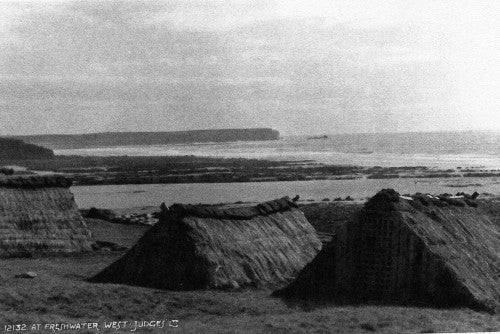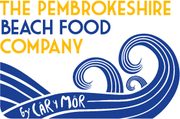
A (VERY) BRIEF HISTORY OF LAVER SEAWEED AND LAVERBREAD IN WALES
Written by The Captain - Jonathan Williams
The very first written description of laver being eaten was in Pembrokeshire and was mentioned by Giraldis Cambrensis (Gerald of Wales) in the 12th century on his adventure around Wales. It was also later documented in William Camden's Britannia – 1607, where it vividly describes the springtime gathering of "Lhawvan" from the beach of Eglwys Abernon near St David's in Pembrokeshire:
"Near St Davids, especially at Eglwys Abernon, and in many other places along the Pembrokeshire Coast, the peasantry gather in the Spring time a kind of Alga or seaweed, where they made a sort of food called lhavan or llawvan, in English, black butter. The seaweed is washed clean from the sand, and sweated between two tile stones. The weed is then shred small and well-kneaded, as they do dough for bread, and made up into great balls or rolls, which some eat raw, and others fry with oatmeal and butter".
William Camden Britannia,1607
During the mining era in the eighteenth century, "lawr" became a staple food of the pit workers as part of breakfast. In 1865 George Borrow on his travels wrote of "moor mutton with piping hot laver sauce", a great dish of the time.
Swansea became the laverbread mecca and with its close promiximity to the rich cockle beds of Burry Port inlet, cockles and laverbread became the icons of Welsh food and very much the fuel that fed the people as part of the industrial revolution.
However as the mining communities declined during the mid 20th century and the rise of in popularity of processed ready meals, the demand of laverbread declined so much so that in the 1970s the BBC Radio 4 Food and Farming program saw it as a food about to be assigned to the history books.
Thankfully the tradition continued and I believe will be integral to the Welsh culture for many years to come.


